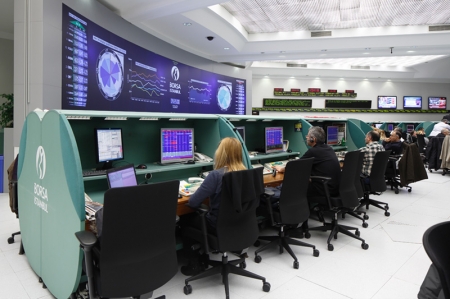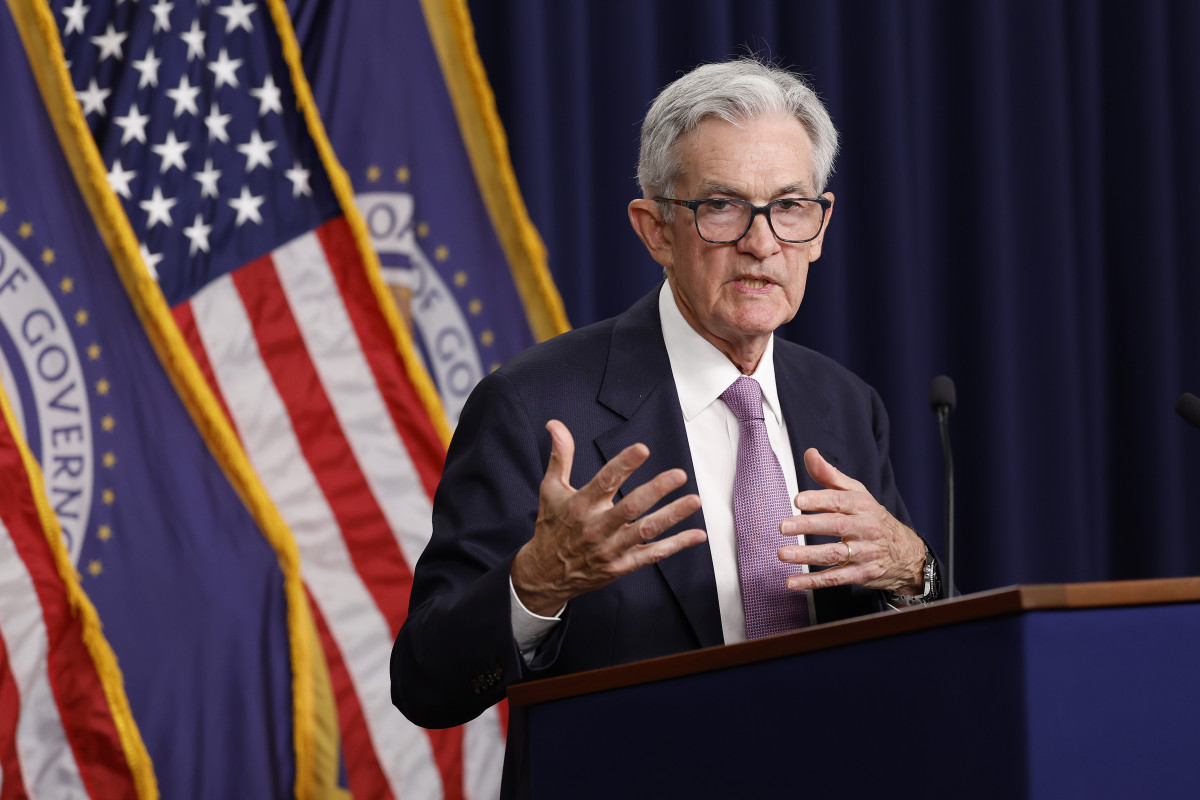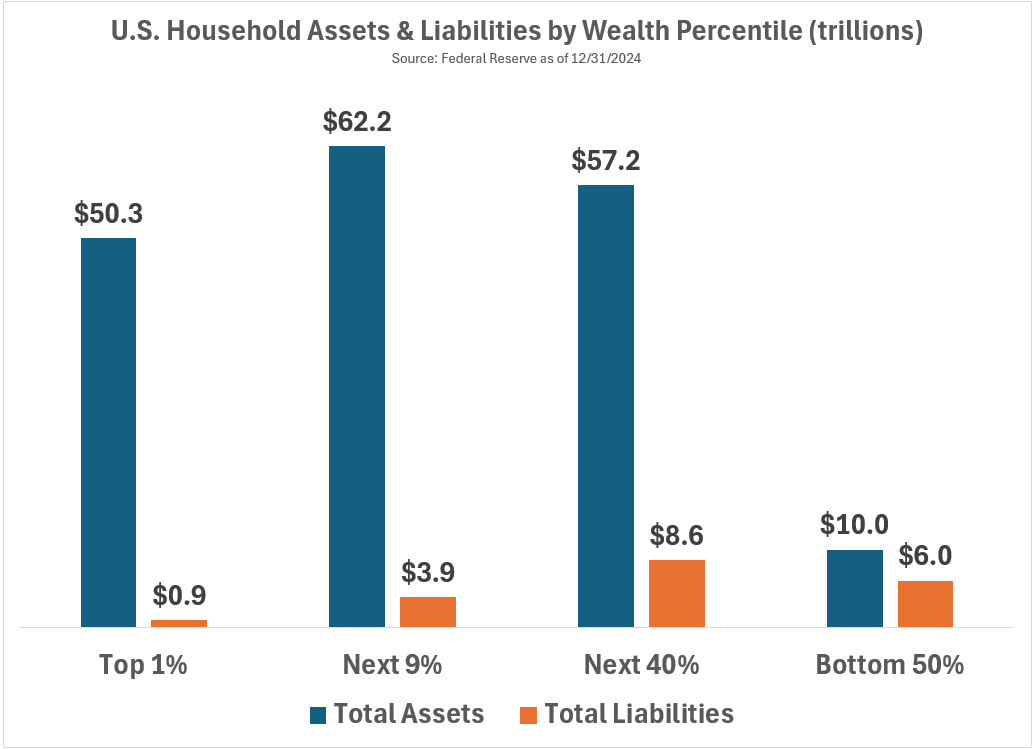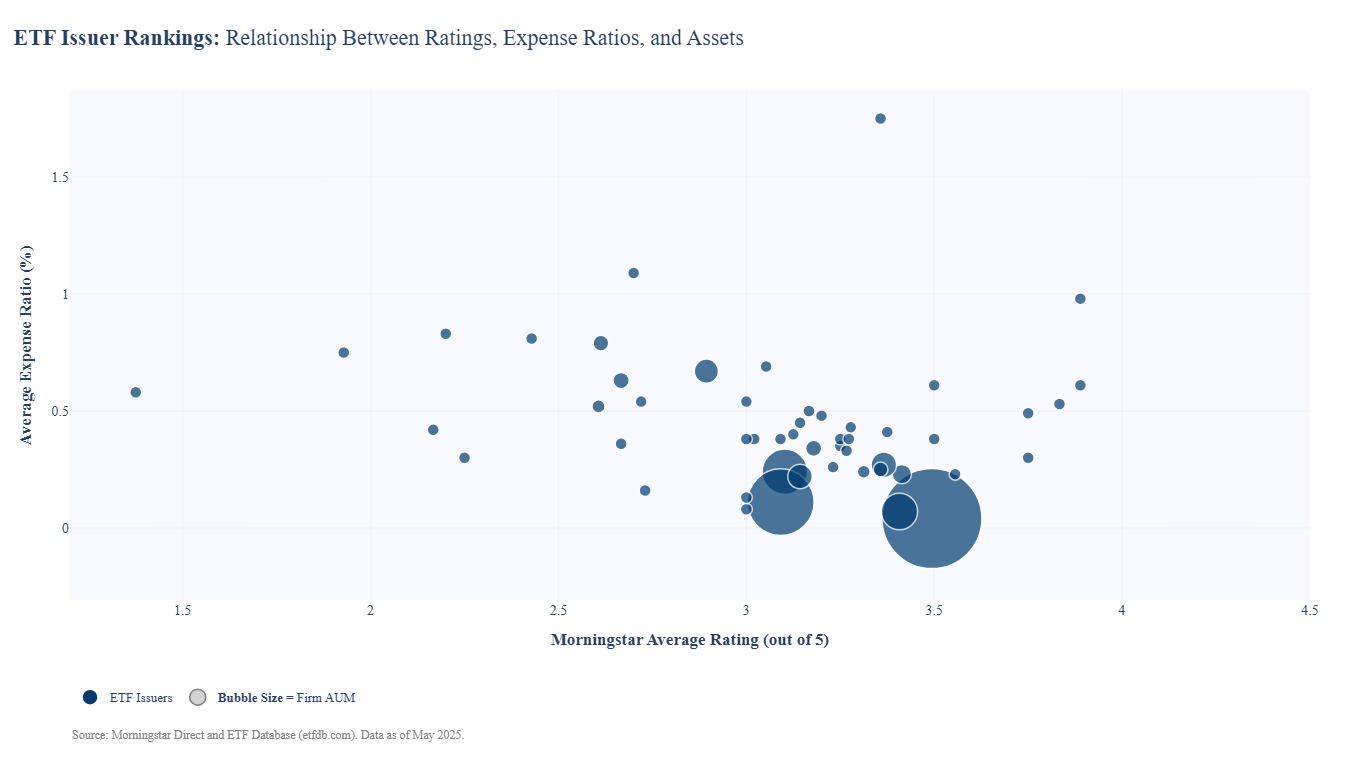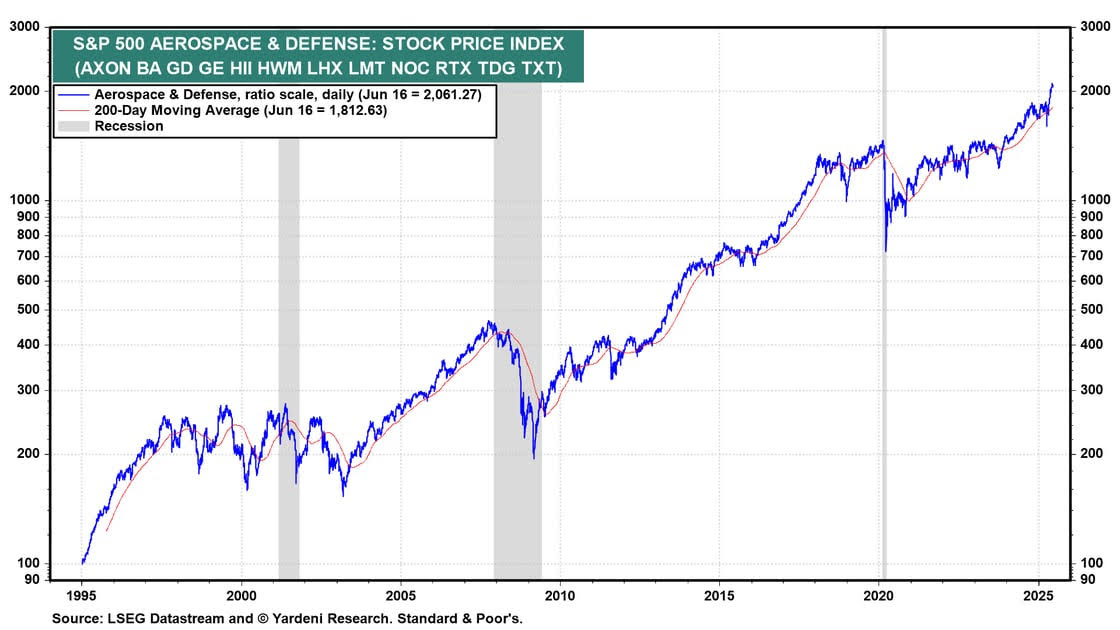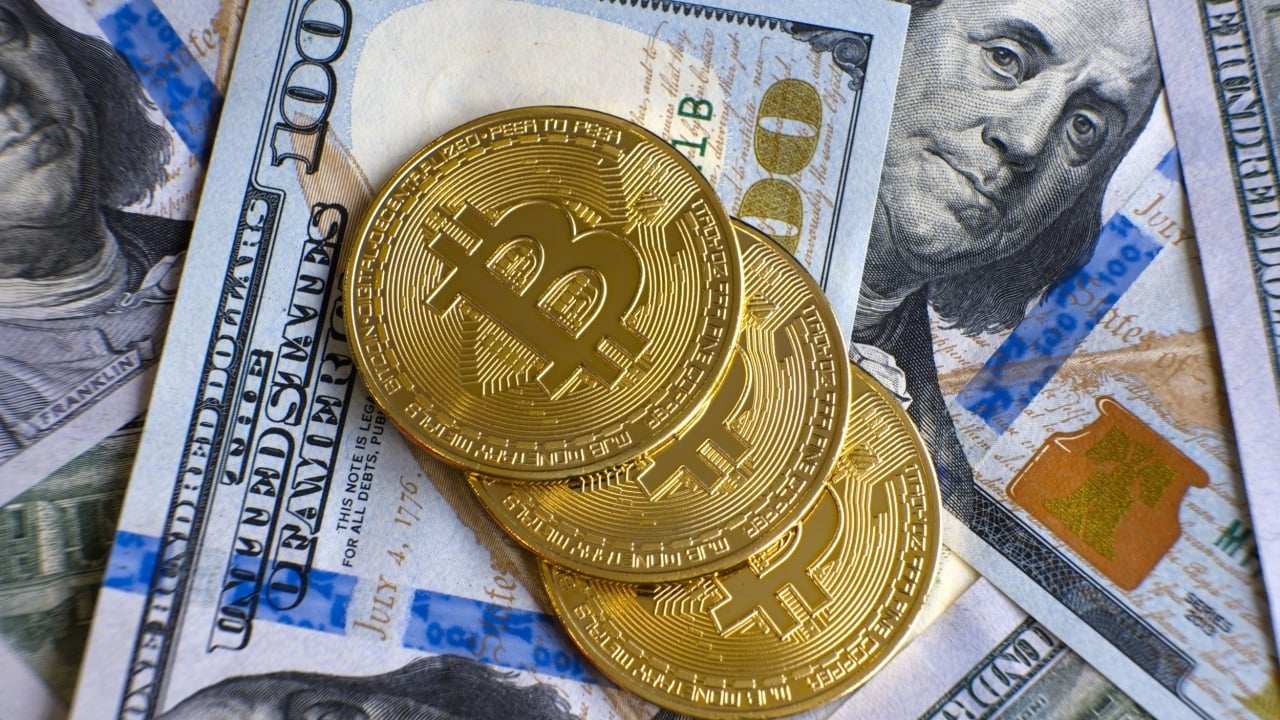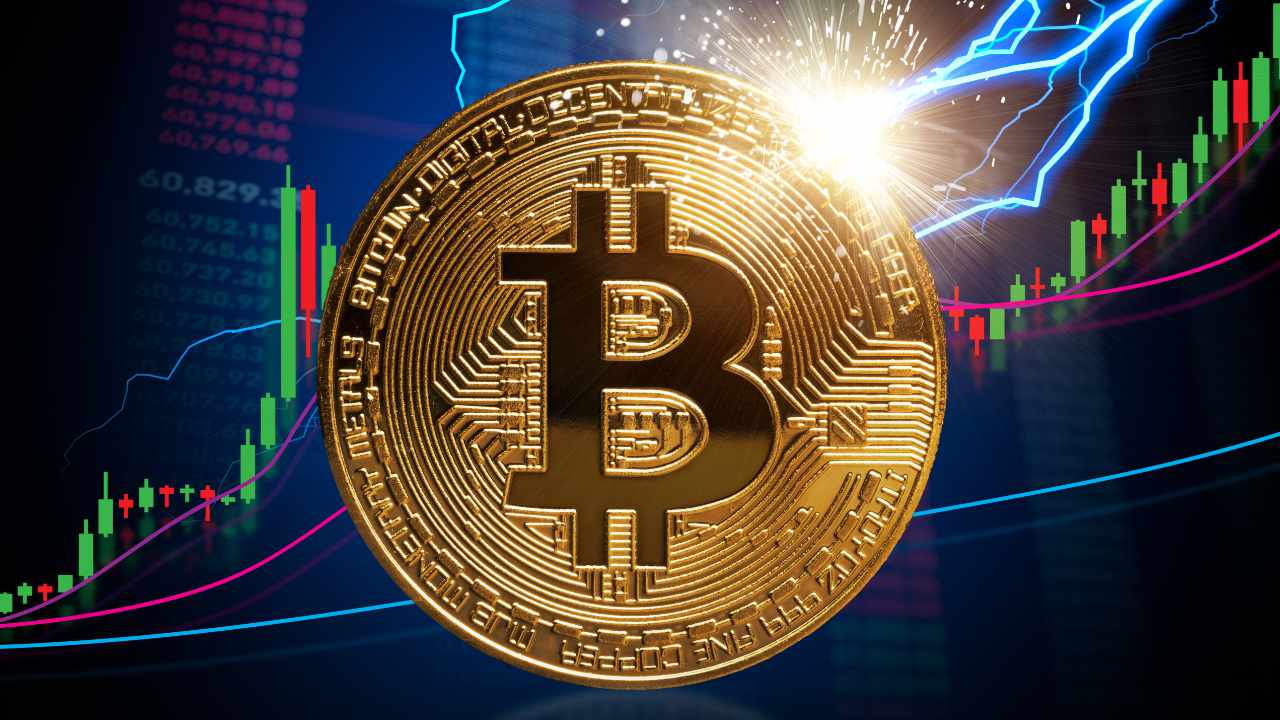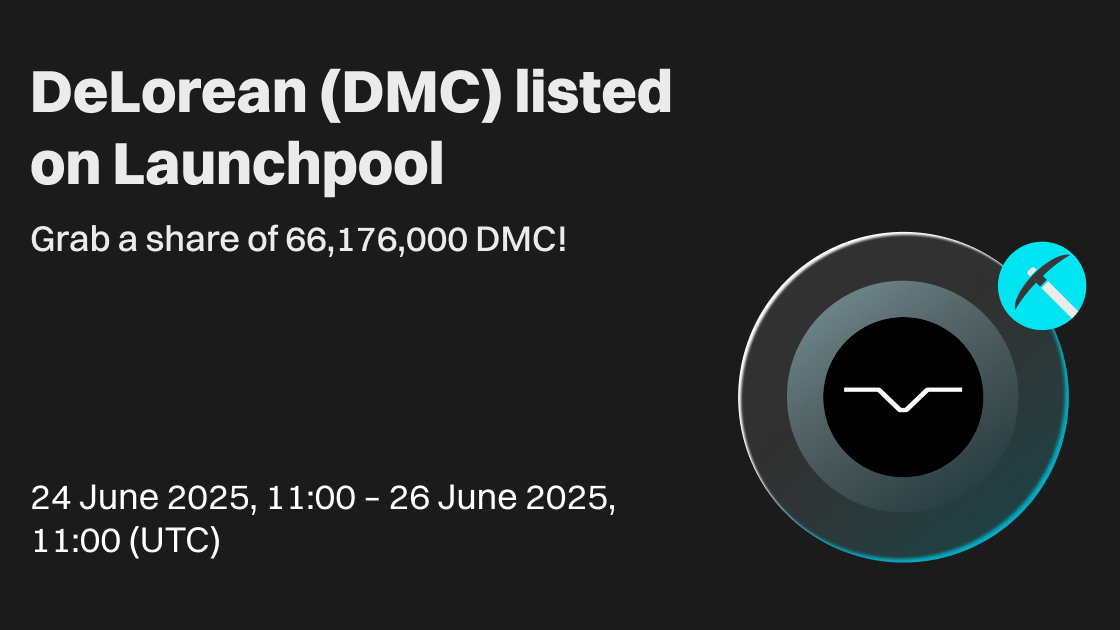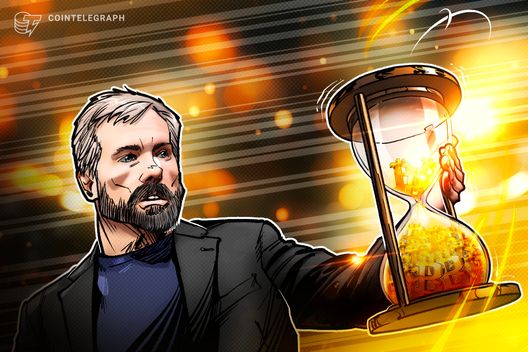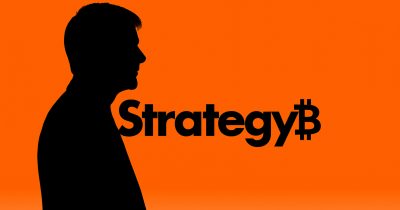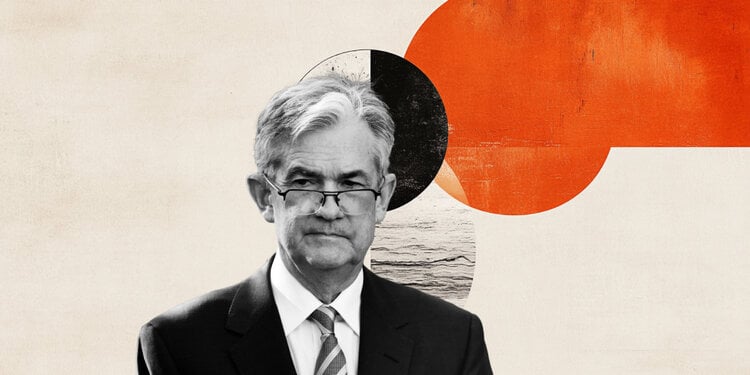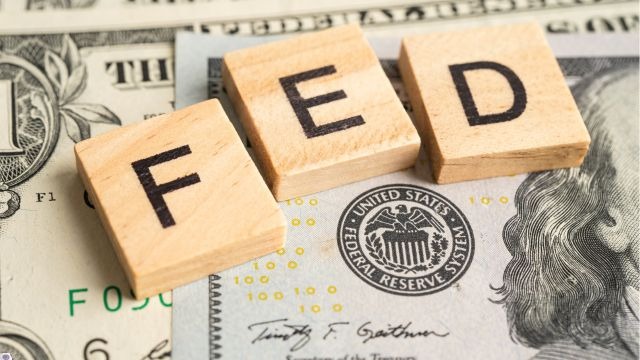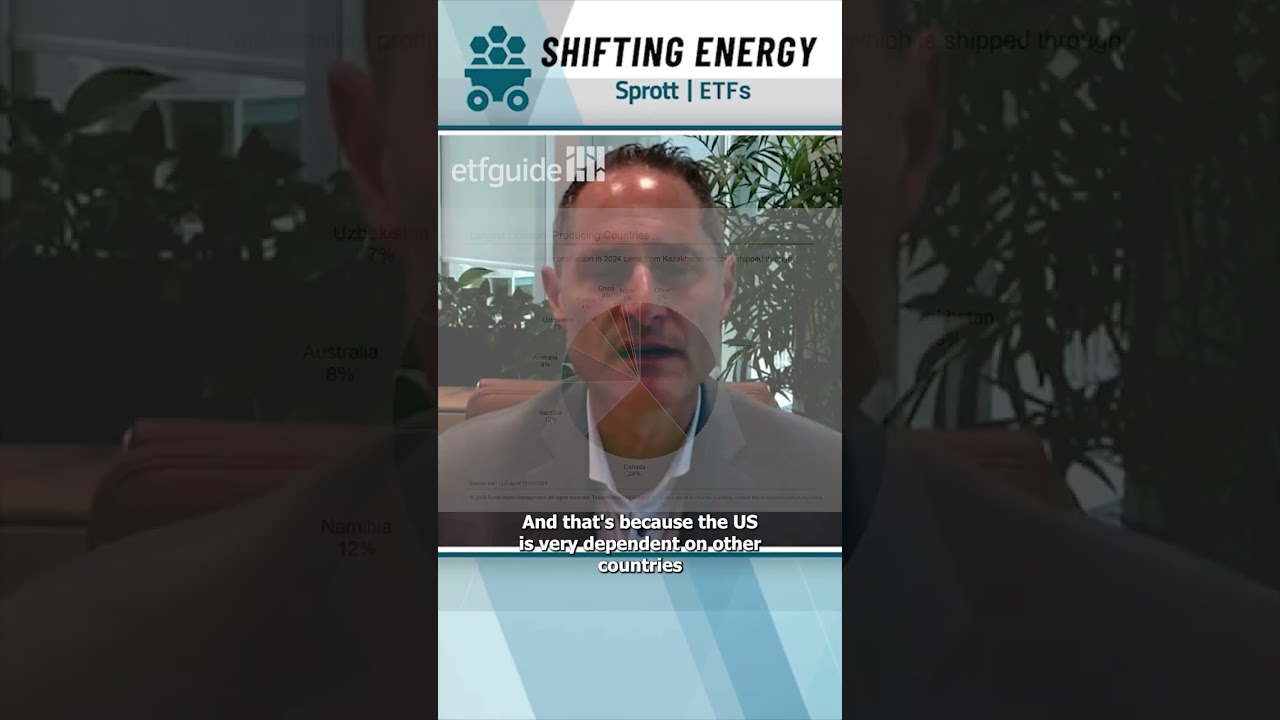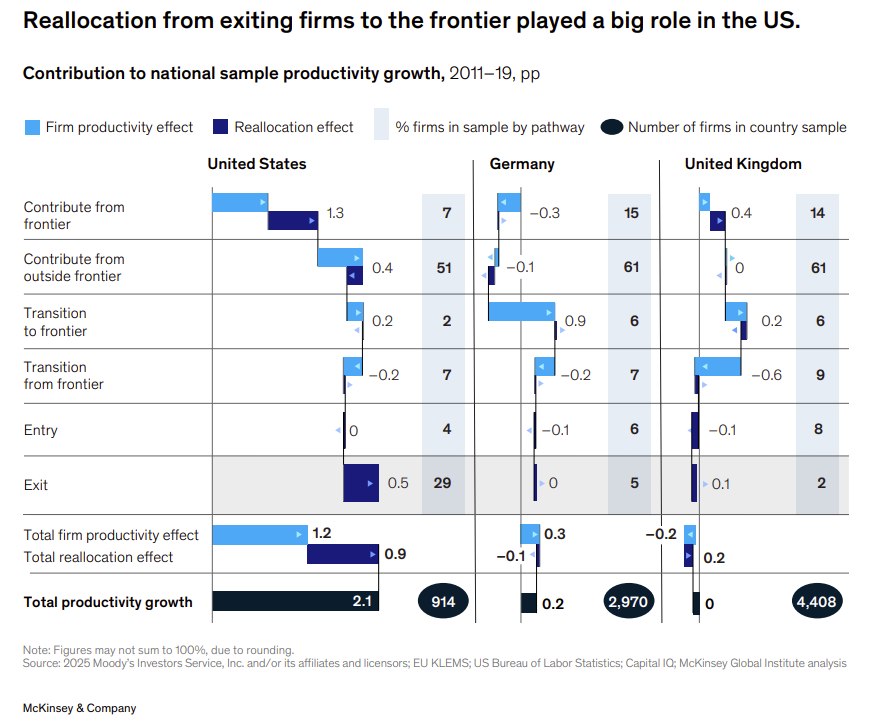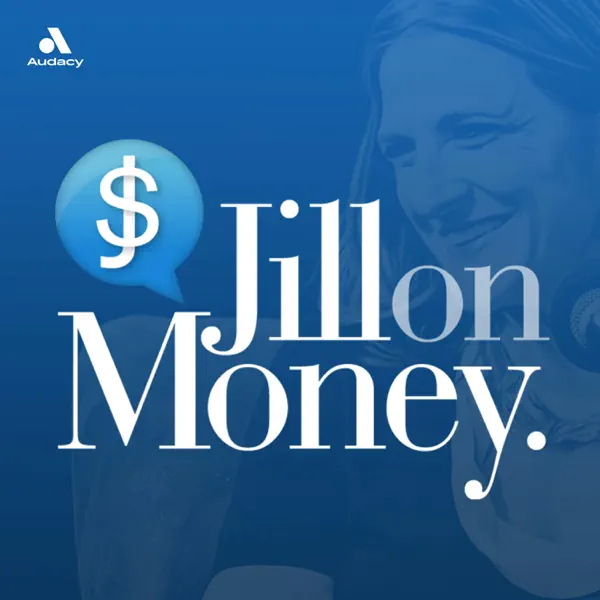Transcript: Steve Laipply, Global Co-Head of Bond ETFs at BlackRock
The transcript from this week’s, MiB: Steve Laipply, Global Co-Head of Bond ETFs at BlackRock, is below. You can stream and download our full conversation, including any podcast extras, on Apple Podcasts, Spotify, YouTube, and Bloomberg. All of our earlier podcasts on your favorite pod hosts can be found here. ~~~ This is Masters… Read More The post Transcript: Steve Laipply, Global Co-Head of Bond ETFs at BlackRock appeared first on The Big Picture.

The transcript from this week’s, MiB: Steve Laipply, Global Co-Head of Bond ETFs at BlackRock, is below.
You can stream and download our full conversation, including any podcast extras, on Apple Podcasts, Spotify, YouTube, and Bloomberg. All of our earlier podcasts on your favorite pod hosts can be found here.
~~~
This is Masters in business with Barry Ritholtz on Bloomberg Radio
Barry Ritholtz: This week on the podcast. Yet another extra special guest, Steve Lightly is global co-head of Bond ETFs and investment giant BlackRock. He helps to oversee over a trillion dollars in bond ETFs. He’s got a fascinating background at both Bank America, Merrill Lynch, and since 2009 at BGI and BlackRock. I thought this conversation was really fascinating. There are a few people in the world of fixed income that understands the bond market, the ETF market, what the fed’s doing, what is driving both institutional and household investors on the fixed income side. I, I thought this conversation was absolutely fascinating, and I think you will also, with no further ado, my conversation with BlackRock’s co-head of Bond ETFs. Steve Lely. Steve Lely, welcome to Bloomberg.
Steve Laipply: Thanks for having me, Barry.
Barry Ritholtz: So, what a perfect time to have somebody who specializes in fixed income and bonds. We’ve had all sorts of mayhem with tariffs on, tariffs off rates, up rates down, yields starting to creep higher and higher. But before we get into what’s going on today, let’s talk a little bit about you and your background. BS degree in finance from university in Miami, MBA from Wharton Finance. Always the career plan.
Steve Laipply: Not quite, so I went to Miami University in Ohio, actually. Really? I grew up in a small town in Ohio. Yeah. So went there for, ultimately ended up in the business school. I did start off thinking, you know, as many people might that, oh, what, what should I do? Should I be a doctor or a lawyer? I decided to try doctor. I love biology, organic chemistry, not so much. That’s
Barry Ritholtz: That’s the gut course that screens a lot of doc future docs out.
Steve Laipply: So I had a good friend who said, Hey, I’m taking finance. I really like it. Maybe give it a shot. I took a finance class, really liked it a lot. It’s sort of like math with dollar signs attached to it. So that’s sort of the way I viewed it. I really enjoyed it. And, and that was kind of, that was kind of it. I was hooked.
Barry Ritholtz: University of Miami in Ohio is gonna scratch out my next question, which, which is how do you get anything done in the Florida sun in Miami? But Ohio I bet is a little easier study type of regime.
Steve Laipply: A little bit. It’s still, it’s a beautiful campus, A lot of fun. But, but yeah, it’s, it was, it was a good experience.
Barry Ritholtz: You come outta Wharton, we’ll talk a little bit about iShares and your previous history at Bank of America Merrill Lynch, but what was it that drew you to fixed income?
Steve Laipply: I, I think a couple of things. One, I really, I really did enjoy sort of the, the variety of things in fixed income. You know, I mean, you know, equities can be complex in their own right, but fixed income, you can have so many different types of instruments and cash flows and structures. And it was just really interesting to me to see that variety
Barry Ritholtz: And what do we have something like 3,500 individual equities outside of the ping sheets, and how many QIPs are there for fixed income? Millions.
Steve Laipply: So I, I did this, yeah, I did this exercise on Bloomberg, depending on how you filter well, north of a million, right? Well, north and it, and it’s, you, you might even get multiples of that depending on how you filter. But yeah, fixed income as, you know, once you, once you issue that a company’s gonna issue debt, you know, perpetually, they’re gonna keep issuing new CUSIPs over time. Right. So, so it adds up.
Barry Ritholtz:No, no doubt. So you’re at Bank America Merrill Lynch as a senior member of the interest rate structuring and strategic solutions sounds very institutional. Tell us a little bit about your time at Bank America Merrill Lynch.
Steve Laipply: Yeah, so I, I think that group, the idea was to work with institutional clients to really help them manage risk, right? And so it was about using derivatives in particular in a sensible way to come up with hedging strategy. So my, my particular focus was on the mortgage servicing community. They, they had a very, very complex asset. They still do, it’s a little bit different now all these years later, but they had a tremendous amount of interest rate risk in those servicing right assets, right? So my job was to work with them to come up with, you know, thoughtful ways to hedge that risk. And, and there are, you know, some very, very vanilla ways to do it. But, you know, we wanted to really try to be, you know, more thoughtful and much more tailored. And that was, that was what I spent a lot of time doing. I really enjoyed it.
Barry Ritholtz: When I think of hedging risk on the fixed income side, not specific to that era, which was kind of unique, I think, of interest rate, risk, credit risk, the underlying security that subsequently gets securitized. Am I warm? Tell me if
Steve Laipply: That’s about right. Yeah.
Barry Ritholtz: Okay. What else do you consider when you’re trying to find a way to hedge a fixed income risk?
Steve Laipply: Yeah, and so you just, you just nailed almost all of it. So depending on what it is. So when you’re dealing with something like a mortgage servicing, right? That’s that lender, you know, sells the loan off, and then somebody retains that annuity that can get prepaid. So if you go pay off your mortgage, I go pay off my mortgage, that annuity disappears. There’s optionality there. You have to hedge that, right? So you have interest rate, risk, volatility, risk, things move up and down, the more likely you are to decide if rates fall to prepay. So it’s all of that good stuff. And then yes, you can have credit risk and other types of assets as well. You,
Barry Ritholtz: You use one of my favorite words, optionality because every time I have a discussion with people who are not in the world of finance, and they say, have you ever calculated how much it costs to take your boat or jet ski out and figure out what each ride costs you? And I’m like, you don’t understand optionality. I have the ability to do that every single day. Whether I choose to exercise that or not, that is still a value that would cost somebody something. You join a, a boat club or a rental club or whatever, lay people don’t get optionality. Tell us how that applies in, in fixed, fixed income. Yeah,
Steve Laipply: And you see this in different ways, Barry. So I mean, not dissimilar, right? So as an example, again, going back to the homeowner part, if you have a mortgage, you can decide to prepay that a lot of people don’t. Interestingly, there are stories that, that exist, and I’m sure you’ve heard ’em, where people still have 10% mortgages somewhere get
00:06:52 [Speaker Changed] Out. Is that true?
00:06:53 [Speaker Changed] There are stories about that. And so if you look at, at statistics, I haven’t done this in a while by the way. So hopefully after this long period of time, maybe they’ve paid ’em off. But you can find these very high coupon mortgages that are still out there and nobody really knows why they haven’t paid them off. But it is your right, but you’re not forced to pay it off. You would think you’d want to if interest rates were low enough. But that exists in different ways. Just like when companies issue debt, a lot of times they’ll issue callable debt. So same idea if interest rates fall or credit spreads tighten, they can call that debt and issue cheaper debt, right? And so that, that’s, that’s just sort of a basic tenant of, of how people like to structure their, their liabilities.
00:07:34 [Speaker Changed] My equity version of that is BlackRock s and p 500 fund is like five bips, four bips, it’s like practically free. And sometimes portfolios come into the office. And why are you paying a hundred basis points for what’s as effectively an s and p 500 index? Why don’t we save you 95 bips a year, compounded over 20 years? That’s a lot of money. So the market is kind of sorta almost efficient, is, I don’t know how else to describe it.
00:08:04 [Speaker Changed] No, I think that’s right. I mean, and, and over time, you know, we, we’ve really started to see investors gravitate towards this idea of efficiency. And you know, again, you, you, this is a theme that you really, really hammer home, which is, you know, basic sort of blocking and tackling is don’t surrender a lot of your return to fees. I think everybody thinks that’s incredibly important. It took a while for people to wake up to it, but I do think over time people have really started to understand fees matter, the strategy matters too. But, but fees matter as well. And so we we have to You want both? Yeah, you want both. You want both.
00:08:40 [Speaker Changed] So I know we’ll get to BlackRock starting in oh nine, but how long were you at Bank America for?
00:08:47 [Speaker Changed] From 97 through oh nine. Oh,
00:08:49 [Speaker Changed] So you quite a while watched the debacle front row. Front row. Yeah. Did you start at Merrill or did you start at Bank America?
00:08:56 [Speaker Changed] I started at Merrill.
00:08:57 [Speaker Changed] Oh, you did? Yeah. So a lot of people, slagged, was it John Thune? I thought he cut a great deal that worked out really well for Merrill employees and relatively well for Merrill shareholders at least compared to, you know, bear Stearns and Lehman and so many other companies. He, he did a solid and it took a while before people recognized it. What was your experience like going through that mayhem?
00:09:22 [Speaker Changed] I mean, it was stressful as, you know, I was not involved with the particular businesses that were under stress, but it was stressful for all of us Oh, sure. As the headline scroll day after day after day, you know, was a front seat in history. Sure. As it turns out. And so I think, you know, hopefully a lot of lessons have been learned from, from, you know, that period of time, as you know, and I think you’ve said this many times, each crisis looks a little bit different. So hopefully we take lessons from the last one and that starts building a knowledge base up over time. So maybe the next time we’re a little bit better equipped to deal with it. But, but it was, yes, it was an interesting time.
00:10:02 [Speaker Changed] Yeah. To say the very least, ho hopefully we take the right lessons. Sometimes we, we draw the wrong lessons. That’s a whole nother story. So how did you find your way over to BlackRock in 2009? I’m assuming that was once the dust settled a little bit. Was it late past March oh nine? Yeah,
00:10:18 [Speaker Changed] It was, it was, it was interesting. You know, you you have sort of contact and networking with different folks and I had, and it was at the time, Barclays Global Investors. Yes. And I, I, I did know, I did know a couple of, a couple of folks that were there and we had just, you know, had casual conversations. But at one point, and this is a former mentor of mine, gentleman named Matt Tucker reached out to me and said, Hey, you know, this is an interesting opportunity. It’s called Bond ETFs. It’s, it’s a business that, that I’ve really been working hard on over here. And I’m looking for a skillset that that sort of maps to that and, and, you know, I kind of think that, that your background might be, might be interesting for this. So, you know, let’s, let’s talk about it and then, you know, sort of the rest is history. But I, I was very, very excited about it. And there is a funny story to this, which is I discovered bond ETFs on my own sort of accidentally. I was trying to buy treasuries and I was very frustrated by the commissions I was getting charged on that. A colleague actually pointed me to the iShares website and showed me that bond ETFs actually exist and you could simply buy this on exchange without actually having to buy physical bonds and, and, you know, pay a commission for it. So,
00:11:34 [Speaker Changed] And, and not only was the commission, you know, next to nothing, the spread and the price discovery seemed to be a little friendlier to buyers.
00:11:42 [Speaker Changed] I was really blown away by that. And I could not stop, you know, scrolling through that website and fascinated by the idea that you could take bonds and put them on exchange. Absolutely fascinated by that and, and feeling a little stupid that I hadn’t stumbled on it before. But so, so the fun part about that was it helped a little bit in the interviews to be able to say, yes, I’m familiar and, and you know, by the way, yes, I’m, I’m actually a customer pro, albeit at a small scale, but
00:12:08 [Speaker Changed] For those people who are unfamiliar with BGI or, or Barclays Global Investments, eventually what I have argued is the single greatest acquisition in at least wealth management history. Barclays Global gets in bought up by BlackRock, and the whole iShares product line gets really super sized with just a much savvier group of product developers, marketers, traders, just everything about it went next level. How much of that were you there to witness? I’m assu. Did you start at BGI or did you start, start a BlackRock?
00:12:48 [Speaker Changed] It’s funny because people often ask me, what was BGI, like, I was there for one month before the actual, it was, yeah. So
00:12:55 [Speaker Changed] Like what I’ve heard through the grapevine is it was a solid shop with a great product. Yeah. A little sleepy kind of back water. If you are at Bank America, Merrill Lynch and you still haven’t discovered their bond ETFs. Somebody is not doing the marketing job they should have.
00:13:12 [Speaker Changed] Well, it was, it was interesting. They were very much, I think quantitative and academically oriented and, and I think, I think a little bit of the culture was okay with, with being, you know, somewhat under the radar because it was, you know, a very proprietary place. And so that, that might be, might be some of it. But yeah, BlackRock did come in and, you know, they did, that deal was interesting if, I don’t know if you remember Barry, there were, there were some discussions about whether, you know, it would be some sort of a private deal or what have you. And then BlackRock kind of came in and said, we’ll take the whole thing in that, that was announced I think in June, so I’d only been there a very short period of time. And then it closed in the fall. And I will never forget, you could tell that BlackRock was, was very efficient at this because the day after the merger closed, the signage was up on the building. You walked in all the screensavers that changed overnight. You had a nice pad notepad with the logo on it and you know, no kidding. Some nice pens and, and all that stuff. So very, very impressive how, how they were able to, to do this so cleanly and, and quickly. That’s
00:14:17 [Speaker Changed] Fascinating. And I failed to mention BlackRock is a little shop over on the west side of the city, 11 $12 trillion in assets somewhere in that range. How big a chunk is fixed income and fixed income ETFs at BlackRock.
00:14:32 [Speaker Changed] We, we just hit 1 trillion in fixed income ETFs.
00:14:36 [Speaker Changed] So keep outta it. You’ll get some a UM soon. Keep, keep plugging
00:14:39 [Speaker Changed] Away. Keep plugging away. Yeah. And, and you know, the industry is, is now globally, the industry is approaching 3 trillion. We’re at around 2.8 trillion in change and we think that number is gonna get to six by the end of the decade for the industry. And we, we hope to be obviously a sizable chunk of that. But it’s been, you know, it’s been experiencing double digit growth, you know, for years and years and it’s just been a very, you know, fast moving river for us. Huh.
00:15:05 [Speaker Changed] Really, really quite fascinating. So Steve, you just mentioned you think bond ETFs can reach $6 trillion by 2030. Is that right? What is the key driver of that growth that’s doubling in less than five years?
00:15:23 [Speaker Changed] Yeah, it, and it’s a number of things and, and we’ve talked about these trends. So I think you have, you have a series of waves of adoption that happened. And it’s interesting because where we tend to see the largest uptake of bond ETFs is when you have stress markets. And so I think this is, we, we have several, several test cases at this point. So, you know, we’ve had many ones since the financial crisis. So financial crisis happened, and I think that’s the first time where I personally started getting reverse inquiry from sophisticated investors asking about the bond ETFs because they noticed that even at the worst of it, let’s call it September or October of oh eight, they were still trading on exchange very robustly. Other markets not doing so well, right? And so that got the attention of a lot of investors at that time, products were probably too small for, for a lot of those investors.
00:16:18 But they became very intrigued by them over the ensuing years. You had a, you know, you would have occasional blips in the markets, whether it was, you know, some sort of an energy dislocation in high yield or what have you. But what we noticed was every single time you would have one of these stress markets, you’d see a huge surge in volumes in bond ETF trading on exchange that would get the attention of larger investors. They would start adopting the products. Why? Because when you need to trade something, you were able to trade bond ETFs even if other things were really struggling to trade. And so every single time you’d have one of these waves of dislocation and fixed income, you started seeing more and more and more investors gravitate to bond ETFs. The big one was COVID. So for sure, February, March, 2020, you know, even treasuries, high quality investment grade, you know, the whole thing e everything was seeing dislocation, right? And so that’s when we saw probably our largest wave of adoption in, in fixed income ETFs was during that period of time, same story. You saw things that people would just take for granted suddenly struggling, you know, in terms of bid ask and depth of liquidity. But what could you trade? You could trade bond ETFs, you could trade ’em in size. That got, at that point a lot of attention because now the products have scaled to a level where even the largest investors could use them in their portfolios. And so that was interesting.
00:17:46 [Speaker Changed] So you’re absolutely preaching to the, the choir. I have heard mostly on the equity side, but also on the fixed income side. You know, these ETFs, you don’t know what the underlying is priced at. They’re filled with all sorts of stuff. It’s really hard to get a print on when it hits the fan. You’re not gonna be able to get in or out of it. You’re gonna have giant spreads and no liquidity. That wasn’t true in oh 8, 0 9. That wasn’t true during the flash crash COVI and the most recent tariff volatility, even in 22 when stocks and bonds were both down double digits for the first time in four plus decades, ETFs traded like rock stars. Why is this such persistent squabbling, you know, you’ll see just wait. Is it that people are losing business to ETFs? Why is there so much fear and concern that for 25 years have been completely unjustified?
00:18:45 [Speaker Changed] Yeah, I think it’s a little bit of, it might be a little bit of
00:18:49 [Speaker Changed] The sour grapes
00:18:50 [Speaker Changed] A little bit, but I, I think part of it too was after the crisis, there was, it felt to me like there was this search for what’s the next thing, right? What’s the next thing that could go wrong? Not quite sure where, why that focus shifted to ETFs, but it was ETFs and probably a number of other things. But I think the idea of a bond ETF in particular drew attention because the, the talk track was, well, you’re taking something over the counter and you’re putting inside this box and you’re putting this box on exchange. And that might, you know, cause some, some interesting things to happen. And in reality what we’ve seen is just the opposite of those fears. Barry, again, just, you know, you pointed out the tariff volatility, same story, different verse, right? So you have, you know, markets are really, really stressed.
00:19:39 You see a lot of dislocations volumes on exchange. Once again, set new records. I think, you know, on the day of the announcements, I think we saw close to a hundred billion dollars of bond ETFs strain on exchange. Wow. Way more than the, the previous record during, during COVID. But the, the sort of, I think skeptic has always said, well, you know, we haven’t seen a good test yet. We haven’t seen a good test yet. I think COVID was a good test. This was just a reminder, right? And so really what happens is, you know, the exchange keeps trading even if the underlying doesn’t. And unlike, you know, the fears, you don’t see these quote unquote forced redemptions or anything like that. Nobody’s forced to redeem an ETF. It can just trade on exchange. And I think that’s the elegance of it. It gets proven time and time again.
00:20:25 [Speaker Changed] So I just wanna define some terms you reference. ’cause in the back of my head I’m always thinking, does my real estate agent mom or my art teacher wife know what that means? So when we talk about on the exchange, we’re talking about anything that’s publicly traded that you could just log onto your online trading account, buy or sell instantly. When we talk about over the counter OTC, that’s one bond desk calling another bond desk and saying, Hey, do you guys have this 2019, you know, muni, California muni series, whatever, and someone has to go locate that. So over the counter means two people literally speaking to each other to engage in a transaction. Is that, is that a fair description?
00:21:11 [Speaker Changed] That That’s exactly right. And so yes, over time bond trading’s gotten more efficient. You know, in the underlying market you have electronic trading of treasuries and now, and now credit. But you know, if you go back 20 years when ETFs were, were first new bond ETFs were first new, it was still very much a voice market. It was a very much pick up the phone exactly as you described. And even today, I think even the most sophisticated institutions still believe in the, you know, efficiency and the elegance of being able to trade a bond ETF on exchange you’re trading. If you, if you just step back for a second and think about what you’re actually doing, you’re trading hundreds or sometimes thousands of bonds simultaneously at a penny bid ask on exchange. You actually still can’t do that in the underlying market. So, you know, it doesn’t matter if you’re an individual, it doesn’t matter if you’re a large sovereign wealth fund, that’s still a very impressive feat to be able to, to do a transaction like that.
00:22:08 And bond ETFs allow you to do that. But I wanna get back to, you know, you, you had asked what are sort of the long-term drivers. I think this idea of just, okay, you can trade these things when you need to. That’s important. Another one would be when we’re building portfolios and we see this both, again on the wealth and on the institutional side, do we need to build portfolios with hundreds or thousands of bonds? Or could we take a low cost bond, ETF as sort of the core of that portfolio? Could we then use individual bonds to sort of flavor that or tilt that in different ways and then maybe add our favorite active managers on top of that. Might that be a more efficient way to do it than just going out and buying, you know, to your point, picking up the phone and calling around and putting together hundreds or, or however many bonds which might take days or weeks. And so I think there’s this growing realization that, you know what, it’s fine to trade in and out when things are volatile, but actually might be more efficient to use these things long term in a bond portfolio. So I think that’s a huge part of the adoption too, is the recognition that this might be a smarter way to build bond portfolios in general. On,
00:23:11 [Speaker Changed] On the equity side, I am fond of telling people, before you go chasing alpha, why don’t you at least lock in beta? Yeah. And I’m, I’m pleased to hear that’s a similar approach on the fixed income side.
00:23:25 [Speaker Changed] Very much, very much. And I think it’s a, and and this has been a journey because, you know, you’ve run into this, and I’ve heard you talk about this on your show before. Everybody wants to believe that, you know, if I’m buying the security, I have intent, I did my homework, it matters a great deal. And that may be true for that security. But when you do that a hundred times, some of that starts getting canceled out, right? And so that’s when you have to step back and say, all right, if I’m looking at my portfolio holistically, I want a certain beta, I want a certain tilt, I want a certain amount of yield coming from, you know, one place or another, what’s the most efficient and the cheapest way to do that? And that’s, I think people are slowly recognizing that maybe the ETF actually has that, that has that utility.
00:24:10 [Speaker Changed] So this is a good time to ask a question about active fixed income investing. It seems like it’s super challenging on the equity side. We all know the stats, 60% of active managers underperform their benchmark in year one. By the time you get to five years, it’s 80 plus 10 years, it’s 90 plus. And by the time you get to 21, it’s a handful of guys like Warren Buffet and Peter Lynch. I don’t see that uphill battle the same on the fixed income side. It seems like fixed income active does much better than fixed income equity. Is that fair? Or
00:24:53 [Speaker Changed] I think there are a few things. So, so one, we think that all investing is active to a degree, right? Okay. You’re making decisions. So if you’re using ETFs, you’re making sort of these broad beta calls and you’re deciding, you know, which beta, which sector, what have you. So there’s an active choice there in how you build that portfolio. But to your point, strictly active in fixed income, what does that mean? That means that, hey, I’m going out and I’m assembling a bond portfolio. I’m gonna compare that to a benchmark and I’m gonna see if I beat it.
00:25:21 [Speaker Changed] And you guys have the benchmark, the, the ISU iShares core US ag, or as everybody calls it, the ag
00:25:30 [Speaker Changed] Yeah, the ag. We have a GG, we have the universal, which is IUSB. One of the things that we’ve been vocal about is which benchmark are you looking at? Because sometimes you’ll see a manager buy a bunch of high yield bonds in their portfolio. Not all, but like, they’ll hold, you know, a large allocation of high yield bonds benchmark to the aggregate, which has none. And say, oh look, I’m beating the aggregate now. That’s, that’s fine.
00:25:57 [Speaker Changed] By taking on more risks,
00:25:58 [Speaker Changed] They’re taking on more risks, right? Okay, that’s fine. You may give some of that back every, call it five years. Right? What we sort of preach too is, okay, let’s get benchmarks that look a little bit closer to the risk you’re taking and see what you’re actually adding through security selection, right? So some of it’s benchmark mis specification, but fixed income markets still are less liquid, they’re more fragmented. So yes, there are opportunities there. And so, you know, people often ask me, do you believe in active or quote passive we call passive index. ’cause actually even in, in, in indexing still an active
00:26:31 [Speaker Changed] Choice.
00:26:31 [Speaker Changed] Yeah, exactly. So,
00:26:32 [Speaker Changed] You know, wait, market cap waiting, that’s a choice.
00:26:35 [Speaker Changed] It’s a choice. And so my answer to that is we believe in all of the above, we think the best portfolios have elements of both of these things index and quote unquote active together, much better portfolio, much more resilient than just sort of suiciding one or the other. Oh, I’m all active or I’m all index, right? So we think both makes a lot of sense and that’s, that’s how we sort of design our product set give, given
00:26:59 [Speaker Changed] The million plus QIPs, the million plus bonds that are out there. My simple thesis was always, if you want to be an active fixed income manager, how hard is it to screen out the lowest quality weakest credit, poorest, poorest yield relative to risk you have to take? And if you’re just cutting out the bottom half of that, that should do better than, than whatever the ag is gonna do or whatever your benchmark is. Because there’s, you know, hey, there’s 3,500 stocks, not all of which are great, a million bonds, there’s a lot of room for the bottom, pick a number, decile quartile, half a lot of junk can get mixed up into that. And I don’t mean high yield, I mean lower quality fixed income opportunities.
00:27:46 [Speaker Changed] Yeah. And it, this is the trick with fixed income, you could see great opportunities, but when you try to act on them, it can be really costly to actually implement and that cost or just can you find that bond, right? So right. And you locate it, the search cost, the actual transaction cost, wait,
00:28:03 [Speaker Changed] There’s a search cost for locating a bond. I always thought it was kind of built into the transaction cost. I didn’t realize, hey, find me this that’s gonna cost you just to ask that question.
00:28:13 [Speaker Changed] Well, let’s call, let’s call that the time it takes to actually get ahold of it. You’re sitting in cash, right? And, and, and I’ve, I’ve heard you say this many times, you probably should not be singing in cash very long. It, it’s a medium of exchange. Right? That’s
00:28:26 [Speaker Changed] That’s
00:28:26 [Speaker Changed] Right. But, but, but this is the, the time it takes you to locate that particular bond and then you have to pay the transaction cost, you know, the bid ask on top of it. So you know, yes, optically you could see opportunities all over the place. The question is, are you able to actually move on them and implement them at the right, at the right price? And that’s, that’s where there’s a lot of skill involved in fixed income, I think. And, and
00:28:49 [Speaker Changed] I’ve heard some clients say, especially institutional clients, listen, my cash, my money allocation, I’ve got that I’ve hired you to do, you are my equity guy, you’re my fixed income, you are my opportunistic distress guy. I don’t need you to carry cash. And I wonder how that impacts people’s thoughts of when you start to see 1, 2, 3, 4% creeping up as a cash balance, gotta put that money to work. There’s an opportunity cost of just sitting in cash fair.
00:29:21 [Speaker Changed] Yeah. And, and, and there is, I think what has happened the last couple years is, you know, money market assets are, you know, in the trillions. And
00:29:30 [Speaker Changed] So, well now that it’s four and a half, 5%
00:29:32 [Speaker Changed] Now that percent, now it’s four point half 5%. And so there’s been a little bit of what I would call, I think apprehension of giving up that certain or what people view as certain, you know, four and a half to 5% and then moving out. The trick to that is, you know, if you wait too long right? The market’s gonna move past you.
00:29:50 [Speaker Changed] And, and, and we’ve watched it, you know, it broke below four. Yeah, it went back over five. You’re not locking that in. You’re taking what? Look, if you’re saving for a house or something six months a year down in the road and you’re afraid of, you know, 20, 22 type year, of course a money market makes perfect sense. But if you’re looking out a couple of years, you, you want a product where you can sort of lock in a higher yield fair statement. Yeah.
00:30:16 [Speaker Changed] And you also want to be able to have, so look, cash is great. We, we launched money market ETFs. Cash plays a role in a portfolio, to your point, it shouldn’t be a huge part of the portfolio. You need to get those assets allocated, you know, on a risk basis. So whether it’s, you know, equities, safe bonds, riskier bonds, it’s like an orchestra, right? You have your string section, your horn section, they all need to play together and just sitting on the sidelines, that’s okay for a while, but it’s, it doesn’t make very good music. You need to actually have everything, you know, kind of playing its role in the portfolio. And so I long term, that is what’s going to actually, you know, build your return,
00:30:55 [Speaker Changed] Right? And I’m spitballing these numbers off the top of my head. I have to double check them. But I wanna say cash is a drag on performance four to five years in equity and nine outta 10 years in fixed income. Am I close there? Ballpark?
00:31:09 [Speaker Changed] Haven’t heard that part on fixed income, but, but I, I, I, I see your point. I mean, you know, if you just sit forever and the fed cuts rates, you’re going to miss it, right? And so that’s, that’s right. That’s, and you know, and I think the consensus right now is ah, you know, maybe they’ll cut a couple times this year, maybe a couple times next year, things can move pretty quickly on the ground. And you know, it’s one of those things where, you know, yeah, by the time you wake up and decide to move, the market may have already moved past you. I mean, to your point, we were at around four point a half percent almost a year ago. And guess where we’re sitting at today? Around four point a half percent. But it’s been quite a bumpy ride up and down. And so who knows where we’ll be in six months. So
00:31:48 [Speaker Changed] The question is of if you were sitting in money markets
for the past year, or you had bought some equivalent bond ETF, which performed
better over the past 12 months, given all the volatility,
00:32:02 [Speaker Changed] Well, on a risk adjusted basis, you could say, all right,
I had less risk in the money market and I’m sort of sitting where I was, you know,
year. Yeah. But if
00:32:09 [Speaker Changed] You’re in high quality bonds, how much risk is there really?
00:32:11 [Speaker Changed] If you, if you bought sort of last, if you, if you think about where we were closer to 5%, you know, you actually ended up locking in pretty good yields. Now the one thing I would say is it’s hard to time, it’s hard to time rates very, it might be actually the hardest thing to do is to time the top in yields that can be a very, very fleeting thing. So it’s more about get invested, build a durable portfolio, make sure you have risk in the right buckets. You need some high quality bonds for ballast, you need some riskier bonds for income, right? That all plays together with the equity side and the alt side of your portfolio. All these things need to come together. Yes, cash plays a role, but you will probably miss out on some very good opportunities. We haven’t had yields like this in 20 years. Right? So are you really going to try to hit the top when you’re seeing yields that have, are as good as they’ve been in a, in a generation? Yeah. So you can get greedy, right? But,
00:33:06 [Speaker Changed] Which is kind of funny ’cause it, it, oh, I always laugh when I think about someone who’s 40, 45 years old on a stock desk, on a bond desk, have not seen 7% yields Yeah. In their entire professional career. And I recall people’s bonds coming up, like the New York City geo bonds finally got called 7%. Like they were getting, I’m getting 15%, what am I gonna do with 7% their, that was when New York City was gonna collapse. You can’t get 15% today, 7% treasuries. Hey, that’s a good deal. No one realized how great a deal it was, right. 25 years ago. But that’s just, just the reality. Yeah.
00:33:47 [Speaker Changed] And then you do have to go back to the mid two thousands to see yields at these levels. So it’s a great opportunity and we, you know, rather than saying, well I really wanna hold on until 5% I, you know, I mean you, you just may miss it. So we with, we think it’s just a great, great time in fixed income.
00:34:03 [Speaker Changed] A a absolutely. And I wanna just remind everybody who thinks they can time yields or the fed collectively, everybody has been completely wrong about when the Fed was gonna start cutting, how far they were gonna cut, how often they would’ve cut. Like the consensus could not possibly have been more wrong for like, what, three years? Yeah. Four years. Here comes the recession, here comes the fed cuts, here comes if you’re waiting, ’cause you think you can guess if you’re gonna be a macro tourist, best of luck to you,
00:34:34 [Speaker Changed] Right? Yeah, exactly. It’s build the portfolio for the long term, you know, and, and you may say, well, I could have gotten a higher yield, or Hey, I locked in a pretty good yield year. Either way it’s about the next 10 years. It’s not about the next month. Huh.
00:34:49 [Speaker Changed] Really, really interesting. So let’s start out talking about fixed income today and the obvious spike in bond market volatility we’ve seen this year. Tell us what’s going on.
00:35:02 [Speaker Changed] It’s, we’ve covered a, a couple of these things, but it’s pick your theme. Okay, so let’s, let’s go back a few years. We had COVID we had the policy response to that. We then had transitory inflation, which became not transitory inflation. We then had the, we had the reverse policy response, which was to aggressively hike rates the i the most aggressive tightening cycle in, in 40 years, right? So people were used to seeing rates, you know, bumping up against zero. I think at one point the 10 year yield was, you know, somewhere in the, you know, 60, 70 basis point range at the very, very, very lows. And I think this was quite a shock to people who were just sort of used to seeing the post-crisis, post-crisis, sorry, quantitative easing regime. All of a sudden you have yields moving, you know, to a two handle, three handle, four handle, and then ultimately a five handle something.
00:35:56 To your point, many investors haven’t seen this before. And so it was, it was quite a shock to the system then we kind of hit sort of equilibrium. The economy seems to be doing all right as we talked about, you know, people were worried about recession, it hasn’t materialized yet. The fed, you know, paused for a while, started easing, then all of a sudden you get new policy initiatives coming in, specifically tariffs, right? And so that caused a general rethinking of the way the economy is going to move going forward. Will inflation come back, won’t it? It’s just been, you know, a lot of up and downs and, and as we were talking, if you just look at the trajectory of the tenure yield, you know, we, we just sort of do this large, you know, kind of sine wave between, you know, call it sort of high threes and high fours and we’ve been doing that now for a few years. So you’re just sort of stuck in the middle of, you know, kind of a four handle, but you get these ups and downs depending on, on what the driver is.
00:36:56 [Speaker Changed] And just to put some specifics on this, when, when we look at the broad economic consensus about tariffs, they’re generally perceived as inflationary, sort of a giant vat tax on consumers. I know a lot of people in the administration push back on that characterization, but if you’re spending more money on tariffs, you have that much less money to spend on other things. Therefore it should hurt corporate revenues and perhaps be someone inflationary. Is that, is that a fair assessment?
00:37:29 [Speaker Changed] It’s, it’s hard to say. So I think, you know, I’ve heard both arguments. I think really what inflation is about, right? So we, whether it’s tariffs or something else, you know, people often talk about these things is well that’s a one time shock versus something that happens repeatedly over and over again. I think some of that’s academic inflation’s really. I almost think it’s a mind game or an expectations game. The real, I think question is, does inflation, you know, a higher expectation for inflation somehow get embedded or get sort of resurfaced, right? As a result of whatever policy initiative. And so I think what the Fed’s looking at is less about a specific thing and more about whether people start worrying that inflation will be at X level, like, which may be above where the Fed wants it to be. To me, I think that’s what they’re really focused on is, you know, hey, we got things down, we’re at 2.3%.
00:38:23 And by the way, what’s interesting, I actually looked at this, if you go back to, let’s call it 95 to 2005, average inflation was around two and a half, right? Not two, right? So, so if you kinda look at a long, long time series on Bloomberg as an example, right now where we’re sitting isn’t too far off where we’ve been on a long, you know, 20 odd, 30 odd year journey. But I think what the fed’s worried about is will any particular action cause people to start worrying that inflation will be higher? And as you know, sometimes that that can become sort of a self-fulfilling thing. I think that’s kind of the concern. So I’m
00:38:58 [Speaker Changed] Gonna play devil’s advocate on every point you, you said, and I want to hear your pushback, but before I get to that, former vice chairman of the Fed, Roger Ferguson, did this accidentally very funny piece about the 2% target and he could not find an academic basis for that number, but he traced it back to an interview from the Australian, their central bank chief on TV in the 1980s. And he mentioned 2% as their target. That was the first mention of it. I, I mean it certainly was a credible target in the post financial crisis while we were trying to get up to 2% inflation and deflation was the fear. But once the cares act and the new era of fiscal stimulus passed, isn’t 2% kind of the wrong target. Why doesn’t two and a half or 3% make sense in an era of fiscal, not monetary stimulus?
00:40:01 [Speaker Changed] I’m gonna, I’m gonna say that is above my pay grade, but, but what I will say is if you look at a long, long time series, whether it’s two, whether it’s two and a half, I mean, I think generally right now we’re sort of in that zip code, right? So can they get it all the way down to a perfect two? I don’t know. And, and and do they want to, or you know, does, do you risk going to one and a half? I mean that’s, that’s for them to worry about. I do think that we’re not too far off. If you, if you were to look at this over many, many, many years, the worry is somehow, does everything that’s happening right now start sending you in the other direction Again, people worrying about it, does that start, you know, causing, you know, specific actions that actually lead to it to a becoming more of a reality? I think that’s what the fed’s sort of focused on.
00:40:46 [Speaker Changed] And, and I, I think transitory has become a dirty word, but i i we sometimes want stuff right now I can make the case that this bout of fiscally driven inflation was transitory. Transitory just took a little longer than everybody expected compared to the sort of deep structural inflation we saw in the 1970s. This wasn’t structural. We passed a giant, everybody stay home. Here’s $2 trillion, takes a little while for the pig to work its way through the python. Yeah, right.
00:41:21 [Speaker Changed] That’s interesting. I mean, yeah, you had a huge, huge fiscal impulse, you know, very, very significant fiscal impulse and sure it could take time for that to work through. If you couple that with the idea that you unleashed that fiscal impulse at a time when policy was still easy, the textbooks would tell you that you probably should expect some inflation. But I think, you know, if you look at just the way people had sort of entrenched their thinking post-crisis, they were caught off guard.
00:41:47 [Speaker Changed] When, when you were at Wharton, did you have Jeremy Siegel as a professor?
00:41:51 [Speaker Changed] I did not. I did sit, I was a little bit, I was a little bit disgruntled about that. It didn’t work, didn’t work out scheduling. I did sit on in on some of his lectures just as a, as a guest. So in the back row. But yeah,
00:42:02 [Speaker Changed] I had him in here, I don’t know, two months after the first cares act was was passed and he was the first person I recall saying, Hey, this is economics 1 0 1, $2 trillion, the largest fiscal stimulus as a percentage of GDP since World War ii. We are gonna see a giant bout of inflation, maybe even double digits. And I, I got emails, we love Jeremy, you’ve had him on the past, but he’s crazy. We’re not gonna get anywhere near nine 10%. He doesn’t know what he’s talking about. And it was kind of shocking to hear someone stocks for the long run talk about inflation and bond yields and he turned out to be pretty dead on.
00:42:44 [Speaker Changed] Yeah. Again, if you just sort of go back and you look at a large fiscal impulse coupled with easy monetary policy that’s right out of the textbooks
00:42:54 [Speaker Changed] And, and yet it was so hard, another failure of imagination was so hard to say, no, no, we’ve had inflation 2% for 20, 25 years. What are you talking eight, nine, 10%? Yeah, it just, it just seemed that regime change was so hard to incorporate ’cause it just seemed like such a break from everything we’ve experienced before
00:43:17 [Speaker Changed] And it happened quickly
00:43:19 [Speaker Changed] Very, very, very quickly. So, so, so let’s talk a little bit about the next easing cycle. I’m assuming that six months from now, by the time we get into the fall, the worst of the tariff is behind us. Things will have stabilized at that point. Is the Fed starting to think, all right, we can unfreeze the housing market a little bit and talk, talk about a few more rate cuts this year or next? Like what sort of timing should we be thinking about?
00:43:50 [Speaker Changed] That’s what the market, I looked at this this morning, the market’s pricing in a couple cuts by the end of the year pricing in a couple cuts next year. And so it looks to me the market sort of settled on this idea that maybe we’ll up with a terminal rate of around, you know, three and a quarter, three and a half, somewhere in that zip code. So, we’ll, we’ll see. I mean the cut definitely got pushed out to September, right? I think originally, you know, if you go back even, you know, a few weeks ago we were still thinking sort of, you know, mid to late summer, but that’s, that’s now pushed into September for sure. So, so we’ll see.
00:44:24 [Speaker Changed] So the big question is, everybody’s been expecting cuts for so long and has been so wrong. Is there anything in the data that you look at that suggests a maybe we’re gonna get it right this time in terms of the Wall Street consensus as to when the timing of rate cuts might be?
00:44:42 [Speaker Changed] Well you j you just said it, consensus has a funny way of maybe not actually materializing, right? So I think everybody’s sort of locked in on this, on this path now it looks like just the way the curve is shaped and everything else. Well we will see I, the data has come in, you know, it depends. You, you can find, you can find people who have raised growth concerns, but then you can also find the resiliency crowd. There’s, there’s just a lot of, i I think sort of mixed data right now, but overall, you know, the economy seems to be holding in pretty well so far,
00:45:13 [Speaker Changed] Pretty resilient. You know, one of the things I always look at are spreads and they seem to be relatively low for all the people running around with their hair on fire. They are, yeah. What does that tell us of the state of the economy and, and the state of the fixed income markets?
00:45:31 [Speaker Changed] Yeah, I think if you, whether you’re looking at investment grade spreads or high yield spreads, right? The spreads to treasuries, they’re both pretty tight relative to historical, long-term historical averages. So yeah, the credit markets are telling you that so far they are buying the resiliency story. They think that, you know, balance sheets are still in pretty good shape. I mean you’ve heard this anecdote before that when yields were low, corporations did do, you know, very thoughtful issuance and they were able to lock in yields and really, you know, shore up their balance sheets and, and have these strong cash flow profiles. Now ultimately people will have to refinance and you know, that may be at higher yield. So we’ll see how long that holds. But so far spreads are telling you that the resiliency story is intact.
00:46:17 [Speaker Changed] So corporate debt issuers refinance that at lower rates. Households did it, everybody did it except Uncle Sam, we’ll save that for another time. But if you’re a buyer of debt, how should you be thinking about duration? When do you start extending your duration? Looking to lock in a little higher yield on the possibility that we see lower rates in the future? This,
00:46:42 [Speaker Changed] This is the debate capital THE, right? So I think we’ve been very much in the camp of, you know, the intermediate part of the curve is pretty attractive. So you know, if you’re looking in five
00:46:56 [Speaker Changed] To seven, see a three
00:46:56 [Speaker Changed] To seven somewhere in that zip code, you know, whether it’s in treasuries or, or high grade or even even high, high yields in that area. Anyway, that’s the maturity profile. But if you look at that versus say 30 years, I think that, you know, right now a lot of debate going on, on the fiscal situation, Moody’s action sort of resurfaced that debate. If you look at term premium meaning, and you know, again, let’s define terms the amount that investors want for holding very long-term bonds has gone up quite a lot over the last several months. And I think all of this is sort of playing into this idea that yeah, longer term yields are flirting with 5%, could they go higher? They might, there’s a lot of ambiguity around what our fiscal trajectory is. Are we at risk for further deterioration? We are running deficits with a growing economy and that is, you know, and we’re running larger ones than we historically have with a, with a growing economy.
00:47:53 So that’s what’s caused this fear of the long end. Now are longer term bonds to be avoided completely. I think there’s healthy debate on that. I do think that they still hold some shock absorber value, right? Depending on the situation. So, you know, we like we, we kind of frame this as being positioned, you know, overweight in sort of this, this belly of the curve. ’cause we think that’s a sweet spot. It doesn’t mean that you should have zero right long-term bonds, you know, it could be having some might be a good sort of, you know, insurance policy in a way.
00:48:24 [Speaker Changed] So when, when yield comes down, bond values go up and vice versa. If you’re making a bet, what’s the next 200 basis points in yield? Is it more likely to go higher or more likely to go lower? It would take a pretty big screw up to send yields up 200 basis points. Not a zero possibility, but is that kind of the core bet we’re more likely to see move down than up?
00:48:51 [Speaker Changed] I think the current view is that long-term yields could edge higher on this time edge, higher
00:48:58 [Speaker Changed] Edge, higher like 25, 50 basis points that’s
00:49:01 [Speaker Changed] Been discussed. Five ’cause this idea that depending, okay, depending on how the tax and spending bills come out and how people score that and what’s that gonna look like for the deficit, et cetera, et cetera. You know, the discussion could be, could you see further pressure on the very, very long end? The intermediate part is probably, okay, so the real debate is, are we gonna see more of a steepening depending on the outcome of, of the, you know, tax and spending bills, et cetera, et cetera. That’s been the debate. Now if you get an unexpected slowdown, you could see long-term yields come down temporarily. And so to your point, you know, do you get 200 basis points up or do you get 50 to a hundred down? It all depends on, you know, the unexpected. By definition if you get a sharp slowdown that nobody saw coming, you probably do see longer term yields coming down. And I think not a lot of people are expecting that at all.
00:49:52 [Speaker Changed] Well except everybody for the past five years predicting recessions that never showed up. The other question that I always like to ask is, hey, what happens if we yields don’t go appreciably higher or lower? Can we just be stuck in a four point a quarter to four and three quarter, you know, money market yields, plus or minus around four point a half percent. What does that look like? Can we just stay in that range for 3, 4, 5 years?
00:50:20 [Speaker Changed] Sure. Are you likely to probably not. History would tell us that except for you had this long period that doesn’t look really like anything that we’ve seen. The the 2010s. Yeah, the 2010s, right. Yeah, it’s just totally unique. So unless we go back to the 2010s, probably not, but, but I think, you know, my earlier point, it’s gonna be really hard to call, like this is the best yield that I want to get into. It’s more about we’re gonna have ups, we’re gonna have downs, we’ll have cycles. It’s really about building that portfolio out for the, for the long term and getting income. So it’s the first time in 20 odd years the income is back in fixed income. So that’s pretty compelling.
00:50:57 [Speaker Changed] So if, if someone’s fixed income investor or looking to add fixed income as a sort of shock absorber to their equity portfolios, what segments of the fixed income market do you find attractive? Where are the opportunities today?
00:51:13 [Speaker Changed] We’ve been seeing flows mostly go into very high quality. So that being treasuries, that being investment grade, that’s where, you know, the bulk of flows have been moving into. And again, much of it has been in that sort of belly of the curve type of exposure. Now, mathematically as a shock absorber, you’re gonna get your biggest kick from the very long end of the curve. We just talked about that, right? You’re taking some risk there. So
00:51:37 [Speaker Changed] ’cause if it goes the other way, if
00:51:38 [Speaker Changed] It goes the other way, it hurts, right? And so the debate’s going to be, you know, will it play that role if you get a big slowdown, right? If you get a huge risk off, will you see long, long-term yields rally like they have in the past in light of some of the fiscal concerns? That’s the big, big
00:51:54 [Speaker Changed] Debate and the dollar concerns on top of it. Yeah,
00:51:56 [Speaker Changed] That’s the debate. But,
00:51:57 [Speaker Changed] And and what about, you know, we always have clients who are looking into their retirement, you know, I just want X dollars and not worry about taxes. If you’re in a high tax state, how are you looking at the muni markets these days?
00:52:12 [Speaker Changed] Yeah, and I think Munis have, have really, you know, seen some whipsaw as well, right? So a lot of folks now look at, look at Munis and see some opportunities there. Again, this discussion around tax policy has really, really sort of caused a lot of volatility. At some point you just have to really make an allocation decision and if you’re, if you are, you know, in a high tax bracket, I mean Munis can be pretty compelling and they’ve cheapened up a fair amount.
00:52:40 [Speaker Changed] All right. So I only have you for a limited amount of time. Let’s jump to my favorite questions that I ask all of my guests. Starting with what’s keeping you entertaining these days? What are you watching or listening to?
00:52:54 [Speaker Changed] Well, so the funny part about this is it’s so masters in business, big fan. I, we already talked about that, but no, I also,
00:53:03 [Speaker Changed] Whenever someone says that, I always feel like Rodney Dangerfield and Cady Shack keep it fair, keep it fair, keep it
00:53:08 [Speaker Changed] Fair. No, I right now, you know, streaming wise, my, my wife makes this joke. So she, and, and my, my older sons, you know, will watch Yellowstone or something like that. I’ve always got my laptop open. Right. And so she’s like, you, you, you don’t really watch TV with us. You pretend to. But I think one of the fun things I’m watching, you know, friends and neighbors right now,
00:53:30 [Speaker Changed] So Interesting. Yeah. Yeah. It’s fun. It’s funny. Are you, are you caught up?
00:53:33 [Speaker Changed] Not caught up. Not caught up. I’m
00:53:34 [Speaker Changed] Looking at, oh yeah, so the, well, whatever the last episode was five. Really fun twist. No,
00:53:40 [Speaker Changed] No spoilers.
00:53:41 [Speaker Changed] No spoilers. Absolutely. But, but yeah, so on, not unexpected, but the way they execute it was really well done. Alright, cool.
00:53:49 [Speaker Changed] That’ll, that’ll, that’ll be some good binge. And I, I, I am still very fond of binge watching Law and Order. I will try purposely to hold out. ’cause I do like binge watching, really all of the above, right? So whether it’s organized crime or, or what have you. So
00:54:03 [Speaker Changed] My wife makes eight o’clock, the screens go away. You gonna watch tv, you have to put that away. So that means right before I go to bed the last couple of minutes, let me just see,
00:54:13 [Speaker Changed] We try to impose that rule. It kind of falls apart.
00:54:16 [Speaker Changed] No, no. She’s the strict stern task master. She who must be obeyed. Alright, so let’s talk about, you mentioned one of your mentors. Tell us about the folks who helped shape your career.
00:54:28 [Speaker Changed] Yeah. And, and, and many of them are, are folks who’ve moved on. But I, I think there are certain people that I remember, you know, who really gave good advice and, and you know, I’ll give you a couple of examples. I had a boss, one of my first ones out of, out of, out of business school, and he basically said, look, I view my job as teaching you. I want you to listen and learn and then if you work hard, I view my other job is to help you create financial security for yourself and your family. Huh. But you have to do those things in order for that to happen. So if you listen and you work hard, I’ll try to keep up my side of it as well. And I, that always struck me and I thought that was a, a, a great way to put it.
00:55:12 You know, he viewed his job as teaching, but also if I did the right things to, to help me in the long term. And so I thought that was really interesting. Another mentor, you know, told me that you can be really good at what you do, but you really have to get along with people. You really have to be able to know where somebody else is coming from, work well with people because you can be great at what you do, but if you’re not pleasant to work with, it’s not gonna get you too far at all. And so I think that’s, that’s another lesson. I mean, you know, a lot of times you like to think you’re right in a certain debate or whatever, but you really do have to learn to bridge those gaps or it doesn’t even matter how good you are, what you do. Huh.
00:55:52 [Speaker Changed] Good, good advice for anyone listening, let’s talk about books. What are some of your favorites? What are you reading currently?
00:55:59 [Speaker Changed] Well, reading How to Think Like a Monk.
00:56:02 [Speaker Changed] Huh? I saw that go by on Amazon. This
00:56:05 [Speaker Changed] Was a, yeah, no, it’s pretty cool. I had a friend of mine, I’m not sure why he recommended that book to me, and there might be a hidden message in there, but I think that’s pretty cool.
00:56:13 [Speaker Changed] Don’t read too much into
00:56:14 [Speaker Changed] It. One of my, you know, I I, I like history books and so, you know, I’ve read a lot of the Ken Burn stuff. I, I think in particular, the things I’ve been fascinated with the sixties I think really helped shape the world that we’re living in the For sure. So I’ve been a junkie of a lot of that stuff. And in terms
00:56:30 [Speaker Changed] Of name some authors and books you
00:56:31 [Speaker Changed] Like, oh no, Ken, the Ken Burns stuff. I love all of his Ken Burns stuff’s. Right? Yeah. Really like that. So, but, but I’ll watch any number of documentaries. I just think that really was a pivotal time for the country and the world and kind of has echoes and, you know, really long shadows. So I always thought that was, that was really interesting. I like a book that really kind of stuck with me over the years. It was about, you know, I love math statistics, all that stuff. It was a book called Against the Gods and it was the, oh, remarkable story Risk I
00:56:59 [Speaker Changed] Love about Peter Bernstein. Yeah. Oh my god. One of my favorites. One of the all time great finance books that most people Absolutely 100% should be reading. No, no doubt about that. So I always pick out a handful of books to read over the summer. I’m so happy sitting on the beach wave, crashing in the background, banging through book after book. What just came a couple of days ago was Ron Chernow’s, mark Twain. Oh wow, okay. And you know, Chernow did Hamilton, he did a bunch of giant books. I’m super excited about that. So I’ll I’ll let you know if that’s interesting. I can’t imagine it’s not given both the author and the subject matter. Alright, our final two questions. What sort of advice would you give to a recent college grad interested in a career in either investing or specifically fixed income and ETFs?
00:57:53 [Speaker Changed] Yeah, I think the most important thing is you have to be honest with yourself about what you like to do. And so I, I have met, I’ve met students who want, say they want to get into the markets, and you know, when you ask why that is, they have trouble articulating why. So I think part of it is you just really gotta want to do this because if it’s gonna be your life’s pursuit, you gotta wake up on good days and bad days and still wanna do it. Right? And there are good days and there are very bad days, and you still have to have that same sort of love of it. And so if you don’t love it, right, if it’s not, if you’re just saying, well, you know, I heard it’s a profitable thing, I want to, you know, I have, I have these certain personal goals, that’s, that’s not a good reason to do it.
00:58:34 But if, if you really do love the idea of markets and just this, you know, really elegant thing where somebody, you know, two people on the opposite sides of the planet can somehow find a common price. You know, what, what’s the saying? A trade is an agreement on price, a disagreement on value. I always thought that was love the coolest thing. Love. Right? So, you know, just this idea that, you know, the markets find a way. I, I think if you love that, then it’s the right career for you. But that, that’s the key thing. Find what you love and be really, really honest with yourself. And, you know, it’s fair to say, I don’t know yet. And that’s why you have to feel around a little bit, you know, whether you’re, you’re trying different things, you know, you may land on one desk and hate it, rotate to another one and love it. It’s, it’s, it’s a process, but you gotta really be honest with yourself.
00:59:19 [Speaker Changed] Huh. Really, really interesting. And our final question, what do you know about the world of fixed income ETFs and investing today you wish you knew back in the 1990s when you were first getting started?
00:59:31 [Speaker Changed] Yeah, I I’m going to admit this to you. I I know many of your, your admonishments about investing. I was, I was an original sinner on many of them. Hey, I,
00:59:42 [Speaker Changed] I, no one bigger than me. I, I, I learned the hard way. So
00:59:45 [Speaker Changed] I, I did in fact do a lot of the common mistakes. You know, I I I chase things. I remember, you know, during the original internet boom, buying some really expensive racy mutual funds, which I subsequently rode into the ditch. So I think part of it is, you know, the long-term idea, you know, really, really taking like that long-term view. Now I I I did learn not to panic over the years. Right, right. And not, you know, sort of,
01:00:14 [Speaker Changed] You know, useful skillset if you run a trillion dollars,
01:00:17 [Speaker Changed] I think try to, try to, you know, keep your money, you know, don’t pay away too much of fees and definitely don’t chase the hot, hot thing. I think being diversified, you look, it may not be fun to talk about with your friends, but having a broad diversified portfolio over time, you’re gonna be fine. It’s, it’s, it’s hair raising sometimes, but you’re gonna be fine over the long term. Yeah.
01:00:37 [Speaker Changed] Very often the cocktail chatter, i i it’s not what makes you money. I love the title of Ned Davis’s first book. Do you wanna be Right or do you wanna Make Money? Right, right. And, and that really sums it up. Yep. Well, Steve, this has been really fascinating. Thank you for being so generous with your time. We have been speaking with Steve lightly global co-head of Bond ETFs at BlackRock. If you enjoy this conversation, well check out any of the 530 we’ve done over the past 11 years. You can find those at iTunes, Spotify, YouTube, Bloomberg, wherever you find your favorite podcasts. And be sure and check out my new book, how Not to Invest the ideas, numbers, and behaviors that destroy wealth and how to avoid them. I would be remiss if I did not thank the crack team that helps put these conversations together each week. John Wasserman is my audio engineer. Anna Luke is my producer. Shorten Russo is my researcher. Sage Bauman is the head of podcasts at Bloomberg. I’m Barry Riol. You’ve been listening to Masters in Business on Bloomberg Radio.
~~~
The post Transcript: Steve Laipply, Global Co-Head of Bond ETFs at BlackRock appeared first on The Big Picture.






































